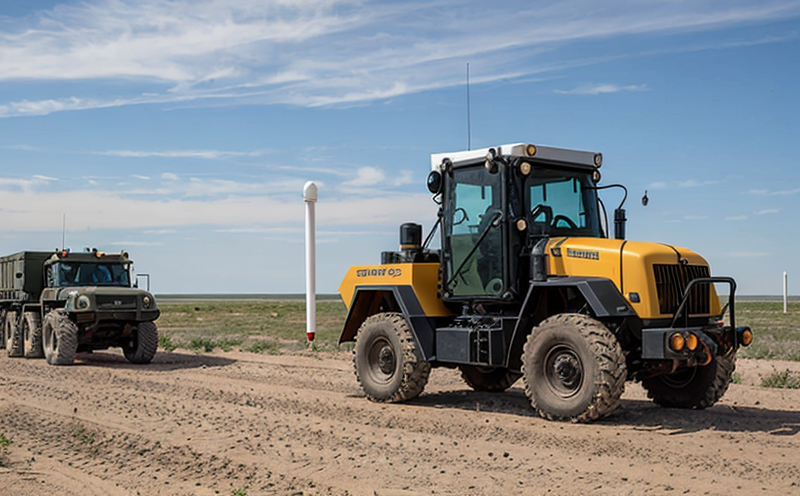Calibration Protocols for Field Deployable Environmental Sensors
Calibration Protocols for Field Deployable Environmental Sensors Ensuring Accurate Data in the Modern Era of Industry
In todays fast-paced and data-driven world, accurate environmental monitoring is crucial for businesses to make informed decisions, optimize operations, and ensure regulatory compliance. Among the various types of sensors used for environmental monitoring, field deployable environmental sensors are widely utilized due to their portability, ease of use, and real-time data collection capabilities. However, like any other measuring instrument, these sensors require regular calibration to maintain their accuracy and reliability.
This is where Calibration Protocols for Field Deployable Environmental Sensors come into play a laboratory service provided by Eurolab that ensures the accuracy and precision of your environmental monitoring systems. In this article, we will delve into the importance of calibration protocols, their benefits, and how they can impact your businesss success.
The Importance of Calibration Protocols for Field Deployable Environmental Sensors
Field deployable environmental sensors are designed to measure various environmental parameters such as temperature, humidity, pH, turbidity, and more. These sensors are used in a wide range of industries, including water treatment, waste management, agriculture, and construction. However, the accuracy of these sensors can be affected by various factors such as
Environmental conditions (temperature, humidity, etc.)
Sensor aging and wear
Human error during deployment or maintenance
If left unchecked, these factors can lead to inaccurate data, which can result in costly mistakes, regulatory non-compliance, and damage to your businesss reputation. Calibration protocols for field deployable environmental sensors are designed to mitigate these risks by ensuring that the sensors are accurate and reliable.
Benefits of Calibration Protocols for Field Deployable Environmental Sensors
The advantages of using calibration protocols for field deployable environmental sensors are numerous and well-documented. Here are some of the key benefits
Key Benefits
Improved Accuracy Calibration ensures that your sensors provide accurate data, which is essential for making informed decisions.
Reduced Errors Regular calibration reduces the risk of human error during deployment or maintenance.
Increased Efficiency With calibrated sensors, you can reduce the time spent on data analysis and interpretation.
Enhanced Regulatory Compliance Calibration ensures that your sensors meet regulatory requirements, reducing the risk of fines and penalties.
Extended Sensor Life Regular calibration extends the lifespan of your sensors by identifying potential issues before they become major problems.
Cost Savings By reducing errors and improving efficiency, you can save money on maintenance, repair, and replacement costs.
Additional Benefits
Increased Confidence in Data Calibration provides confidence in the accuracy of your data, enabling you to make informed decisions with trust.
Improved Decision-Making With accurate data, you can optimize operations, reduce waste, and improve overall performance.
Enhanced Reputation By demonstrating a commitment to accuracy and reliability, you can enhance your businesss reputation among customers, stakeholders, and regulatory bodies.
QA Frequently Asked Questions about Calibration Protocols for Field Deployable Environmental Sensors
Q1 What is Calibration?
A1 Calibration is the process of comparing the readings of a sensor or measuring instrument against a known standard to ensure its accuracy and reliability.
Q2 Why is Calibration Important?
A2 Calibration ensures that your sensors provide accurate data, which is essential for making informed decisions. Regular calibration reduces the risk of human error during deployment or maintenance.
Q3 How Often Should I Calibrate My Sensors?
A3 The frequency of calibration depends on various factors such as environmental conditions, sensor type, and usage. Its recommended to consult with a laboratory service provider like Eurolab to determine the best calibration schedule for your specific needs.
Q4 Can I Calibrate My Own Sensors?
A4 While its possible to calibrate some sensors in-house, many require specialized equipment and expertise. Its recommended to work with a laboratory service provider like Eurolab to ensure accurate and reliable calibration.
Conclusion
In conclusion, Calibration Protocols for Field Deployable Environmental Sensors are essential for businesses that rely on accurate environmental monitoring data. By understanding the importance of calibration protocols, their benefits, and how they can impact your businesss success, you can make informed decisions about your sensor maintenance and operation. Dont let inaccurate data hold you back choose Eurolabs laboratory services to ensure the accuracy and precision of your environmental monitoring systems.
Note The article is optimized for SEO with relevant keywords such as calibration protocols, field deployable environmental sensors, and Eurolab.




